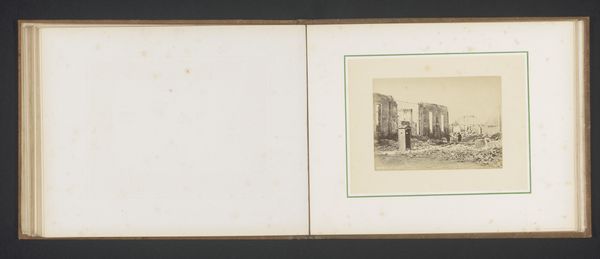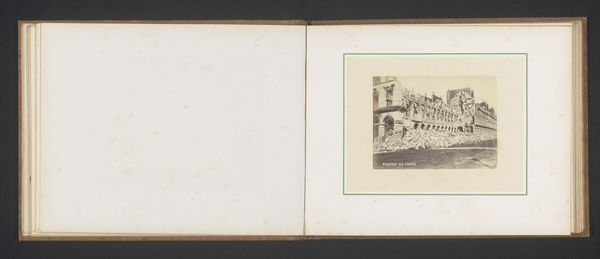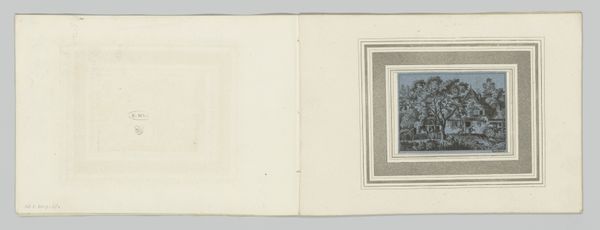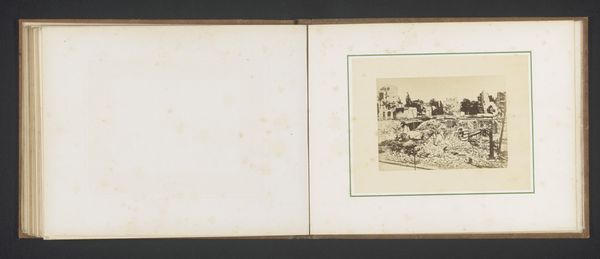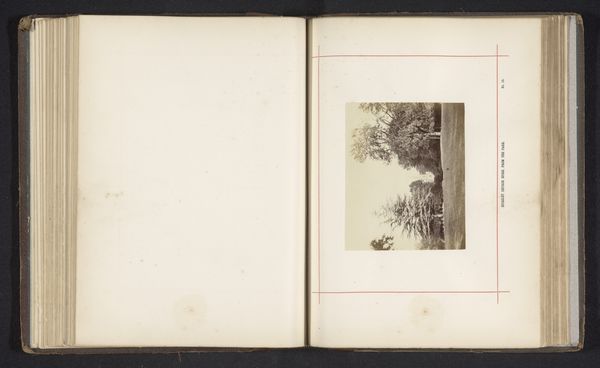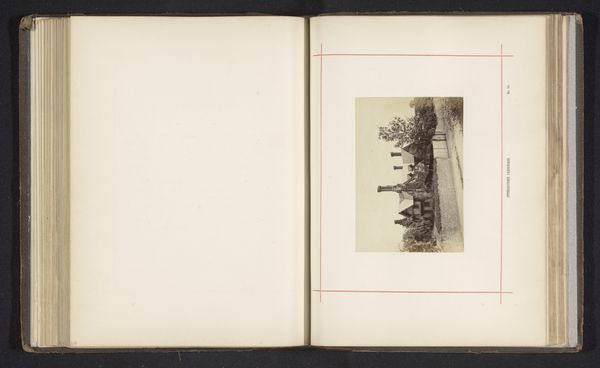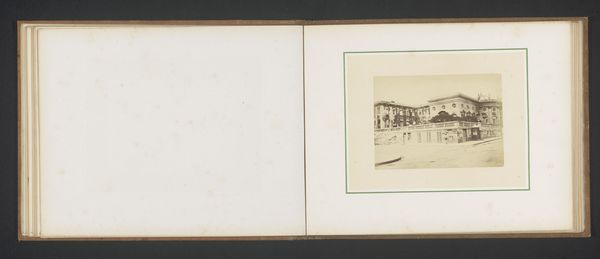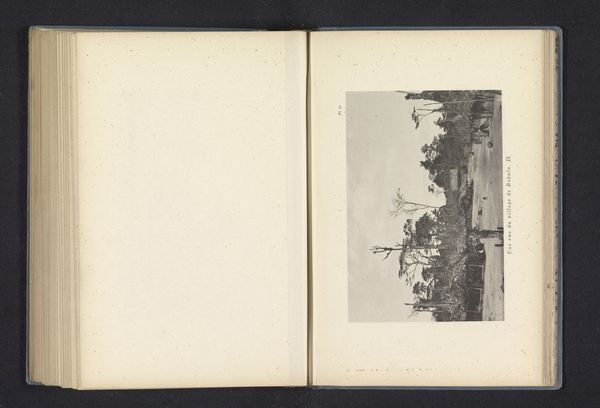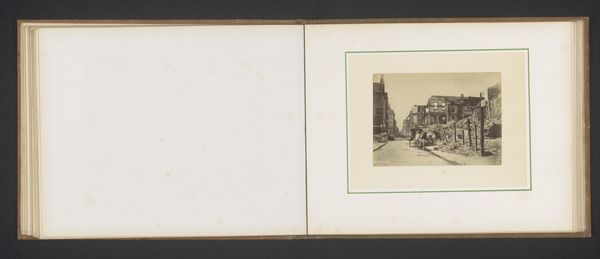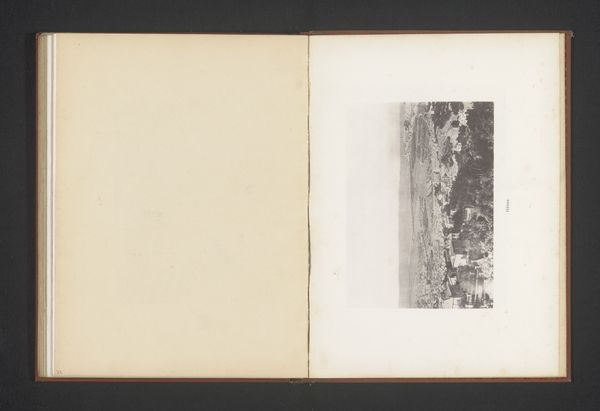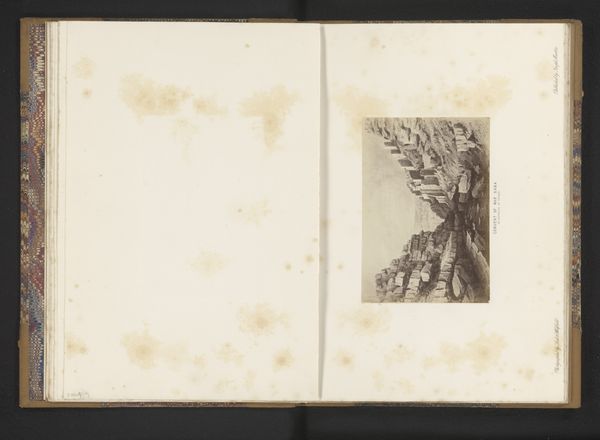
Gezicht op het Théâtre de la Porte Saint-Martin in Parijs na de brand door de Commune van Parijs 1871
0:00
0:00
Dimensions: height 93 mm, width 128 mm
Copyright: Rijks Museum: Open Domain
This print by P. Loubère captures the Théâtre de la Porte Saint-Martin in Paris after it was burned during the Paris Commune. It’s made with the relatively simple technique of etching, using acid to bite into a metal plate, which is then inked and printed. The fine lines and details achievable through etching allow for a stark depiction of the theater's charred facade. The process itself, involving careful layering of lines, mirrors the laborious work of rebuilding a city after conflict. Consider the social context: the Paris Commune was a revolutionary government that briefly ruled the city in 1871, marked by intense social and political upheaval. The destruction of the theater symbolizes the violent clash of ideologies and the physical toll of revolution. Loubère's choice of etching, a printmaking method accessible to many artists, democratizes the image, making it available for wider dissemination and reflection on these events. By examining the materials, process, and historical context, we gain a deeper understanding of the print's significance as a document of a pivotal moment in Parisian history.
Comments
No comments
Be the first to comment and join the conversation on the ultimate creative platform.
